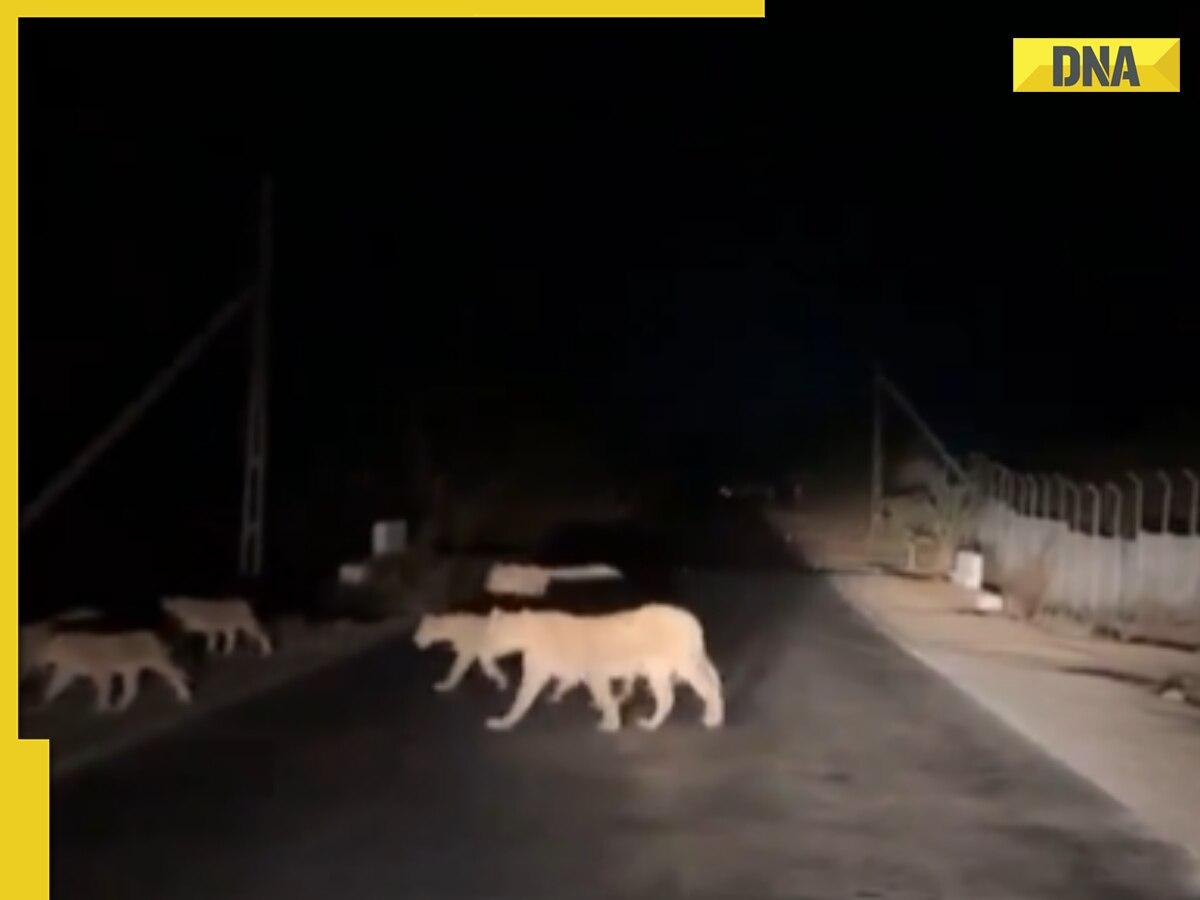
In an extraordinary sight that has captivated audiences worldwide, a pride of 14 Asiatic lions, including lionesses and cubs, was filmed crossing a road near Gujarat’s Gir National Park. This remarkable event occurred during the night in the Amreli district, located in the southern part of Gujarat state. The footage, depicting these majestic creatures moving together under the cloak of darkness, quickly became a viral sensation on social media, drawing widespread attention and fascination.
The Gir National Park, known as the last bastion for endangered Asiatic lions, has seen a significant uptick in this unique population over recent years. According to a 2020 report from the Ministry of Environment, Forests, and Climate Change, the number of Asiatic lions in the Gir forests soared from 523 in 2015 to 674 in 2020. This growth marks a dramatic turnaround from the late 1960s when their population had dwindled to less than 200, as per data from the Gujarat tourism website.
Such an increase in lion numbers has led to these magnificent cats expanding their territory beyond the confines of the Gir forest. They have traversed various ecological corridors and settled in nine different districts across Gujarat, including Junagadh, Gir Somnath, Amreli, Bhavnagar, Botad, Porbandar, Jamnagar, Rajkot, and Surendranagar. This expanded range, covering approximately 30,000 square kilometers, is collectively recognized as the “Asiatic Lion Landscape.”
While the burgeoning population of Asiatic lions is a testament to successful conservation efforts, the journey has not been without its challenges. Earlier this month, Gujarat’s Forest Minister, Mulubhai Bera, reported to the state assembly a concerning statistic: over the past two years, 239 lions, including 126 cubs, have died in the state. Of these, 29 deaths were attributed to unnatural causes, underscoring the complex interplay between wildlife and human activities in these regions.
The viral video of the lion pride crossing the highway poignantly highlights this interaction. Witnesses and wildlife enthusiasts marveled at the rare visual, offering a reminder of the diverse and unique wildlife that thrives within Gujarat’s ecological tapestry. The sight also raises awareness about ongoing conservation challenges and the need to balance human development with wildlife preservation.
The Gir National Park and Wildlife Sanctuary, established in 1965, serves as a critical sanctuary for the endangered Asiatic lions. Conservation measures, including stringent forest protection, habitat development, and community engagement initiatives, have been pivotal in bolstering the lion population. Efforts by various non-governmental organizations and wildlife activists have also played a crucial role in securing a future for these regal animals.
Nevertheless, the reliance on a single contiguous habitat for the lions has prompted concerns about genetic diversity and disease vulnerability. Recognizing these risks, the Gujarat Forest Department has been exploring strategies to create safer, more connected wildlife corridors and promote gene flow between subpopulations. Relocation and rehabilitation projects have also been contemplated to ensure the long-term viability of the species.
As the video of the lion pride continues to garner views and stir conversations, wildlife researchers emphasize the broader implications of such occurrences. Events like these offer an invaluable opportunity to educate the public about the importance of wildlife corridors and safe passageways for animals. They also underscore the need for collaborative conservation efforts that bring together government agencies, non-profits, and local communities.
Community involvement has been particularly significant in the region surrounding the Gir National Park. Local residents have adapted to coexist with wildlife, often making considerable adjustments to safeguard both their livelihoods and the animals. Such grassroots efforts, coupled with robust conservation policies, have laid a strong foundation for the future prosperity of Asiatic lions.
In conclusion, the awe-inspiring video of 14 majestic lions gracefully crossing a highway in Gujarat serves as a powerful reminder of the delicate balance that needs to be maintained between human activities and wildlife conservation. It highlights the successes achieved through collective efforts and the ongoing challenges faced in ensuring a safe, thriving environment for Asiatic lions. The story of these lions is not just a tale of survival but also a testament to the relentless spirit of conservationists and the enduring beauty of nature.












